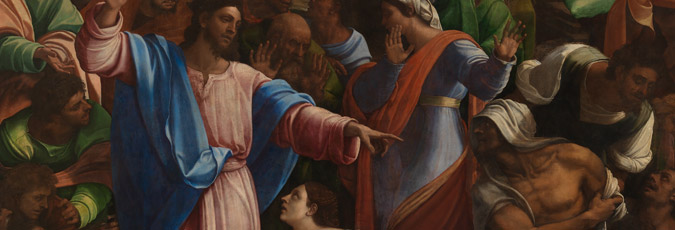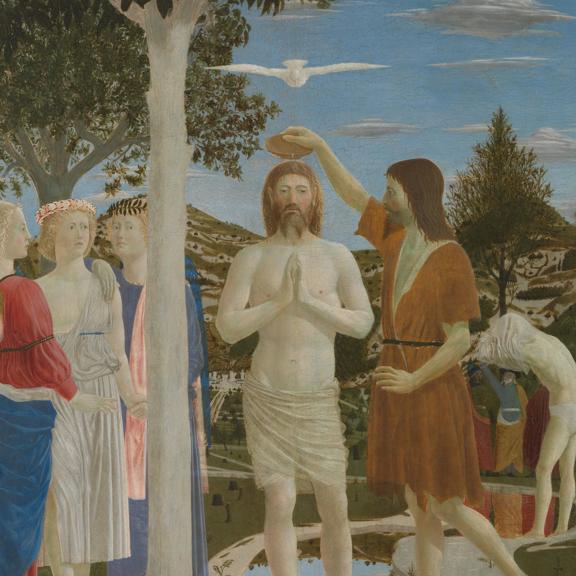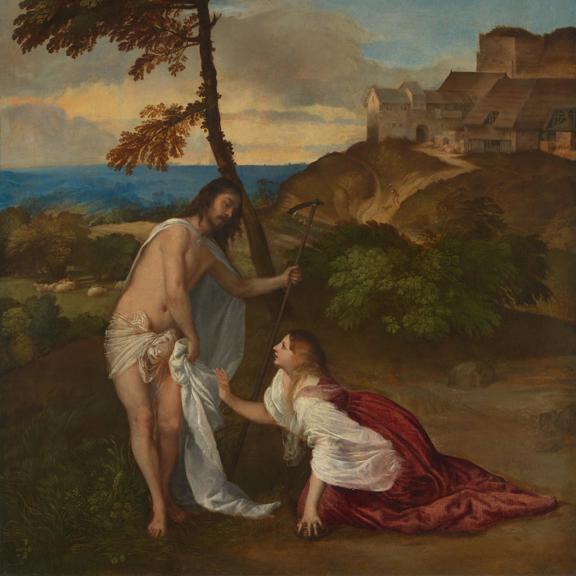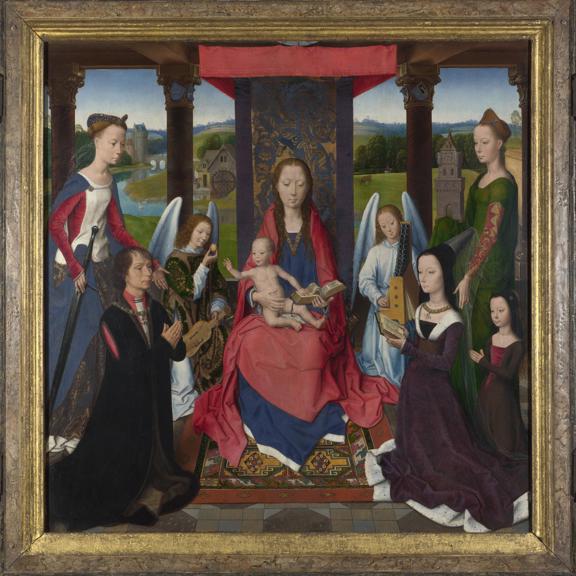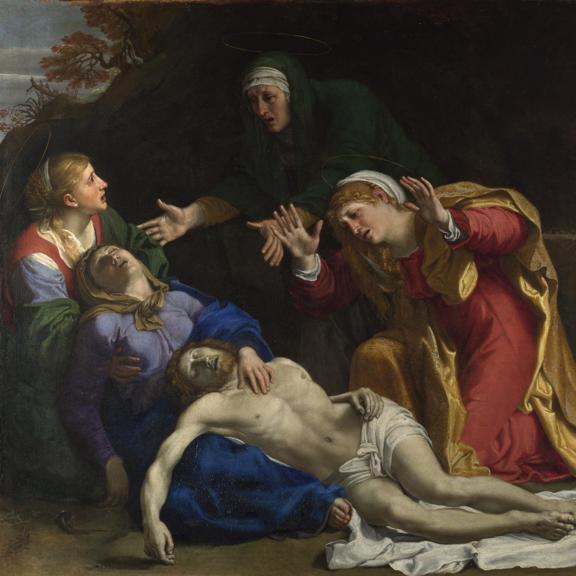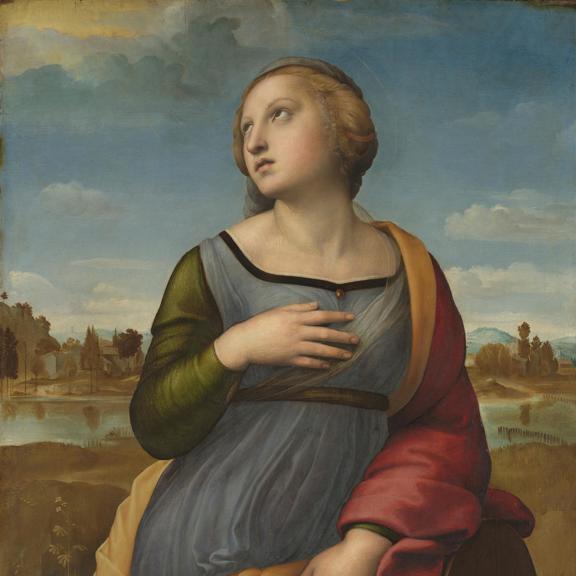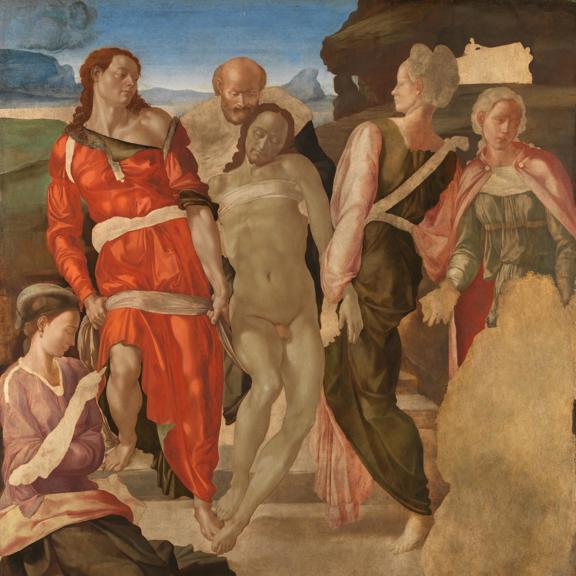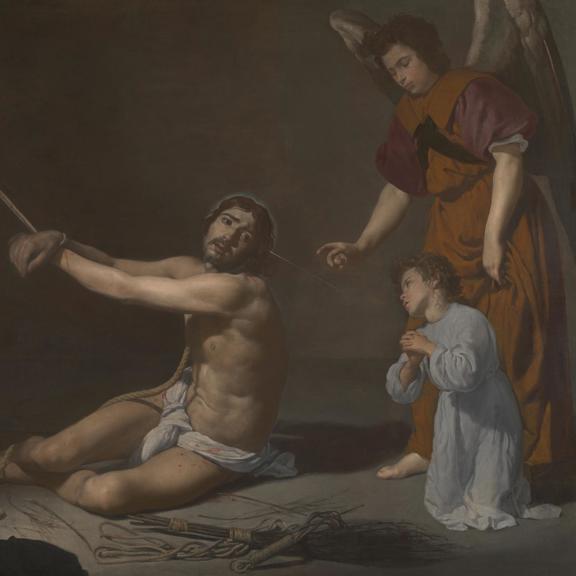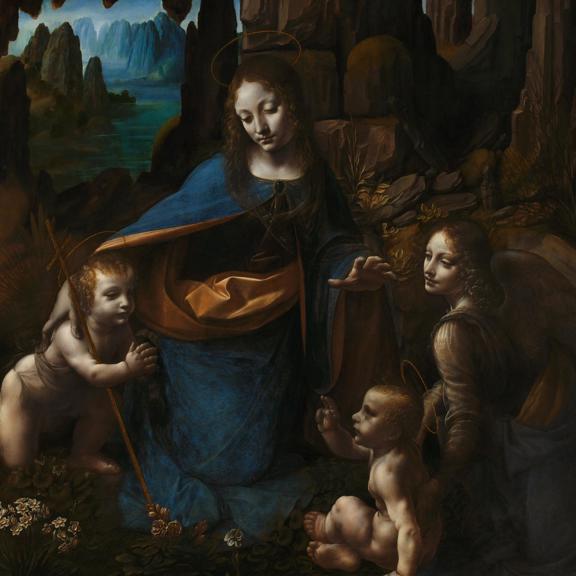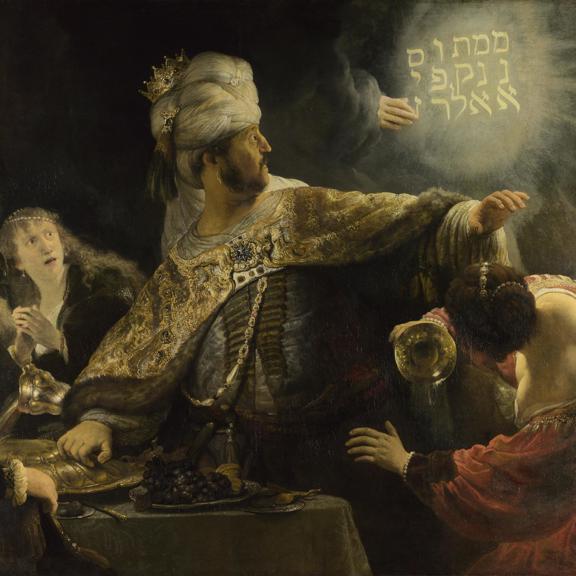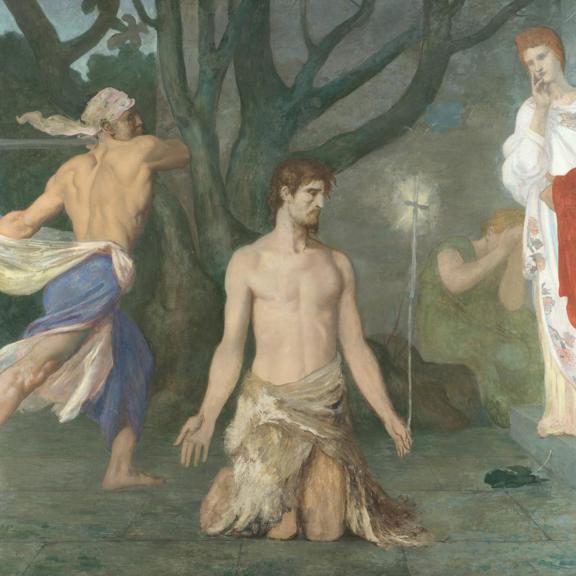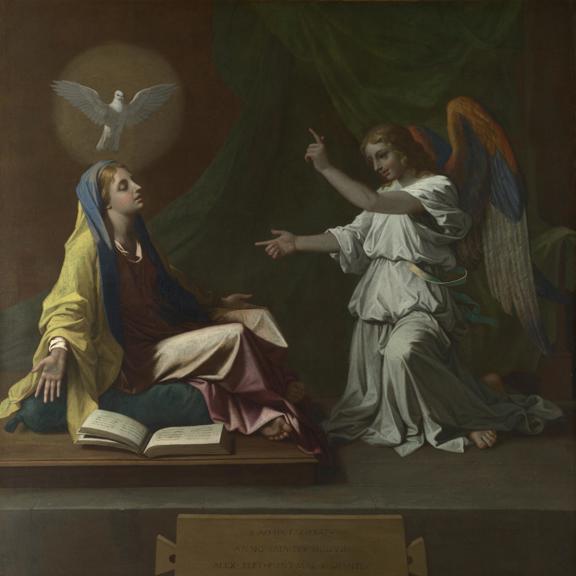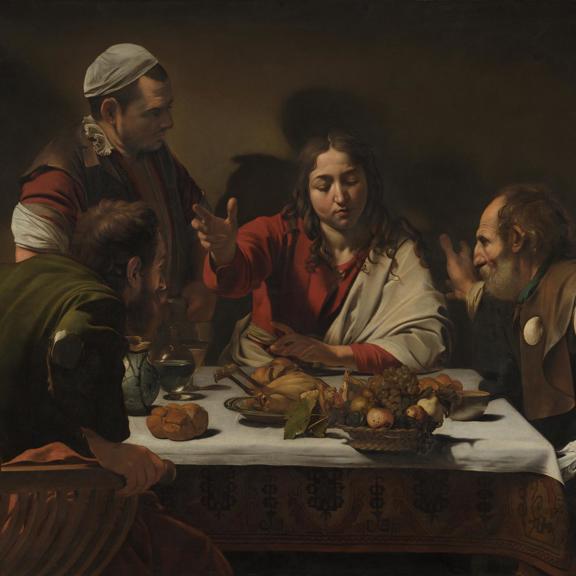About this research theme
Roughly one third of the paintings in the National Gallery's collection of Western European art are of religious subjects and nearly all of these are Christian.
The high percentage of works on this theme reflects the fact that, after classical antiquity, Christianity became the predominant power shaping European culture between the 13th and 19th centuries. Biblical texts, commentaries, and apocryphal stories inspired artists and patrons alike to create these objects of devotion, yet the translation of the Word into paint often raised difficult problems.
Artists and their advisors were faced with the challenge of suggesting, in visual terms, the nature of Christian mysteries – such as the visions experienced, or miracles performed, by the saints – as well as other profound theological beliefs and debates.
These images, made to inspire and strengthen faith through public and private devotion in churches or domestic settings, are now displayed in an entirely different context in the Gallery. For the most part, they are hung according to their chronological and geographical origins, as part of a very different narrative of the history of art. They are now widely accessible to the public and the power of their narratives and beauty of their execution speak to believers and non-believers alike.
The Gallery has long been, and continues to be, active in a variety of research projects grounded in the relationship between art and religion; from exhibitions and catalogue entries to films, podcasts and interactive webpages designed to address how and why these sacred works of art were made, to explore what they might have meant to their original viewers and to discover what they mean to beholders today.
Image above: Detail from Sebastiano del Piombo, The Raising of Lazarus, about 1517-19

